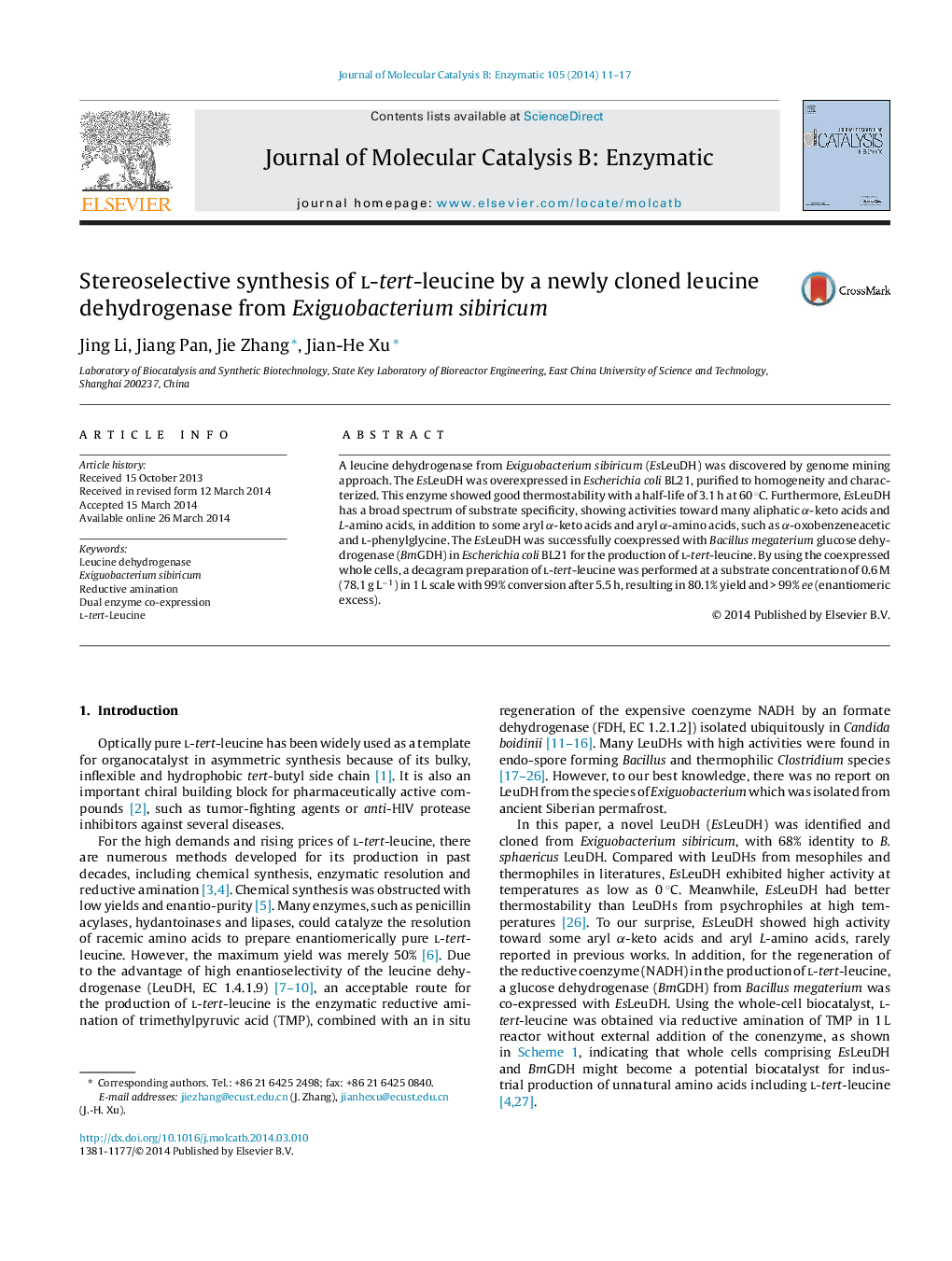| Article ID | Journal | Published Year | Pages | File Type |
|---|---|---|---|---|
| 69825 | Journal of Molecular Catalysis B: Enzymatic | 2014 | 7 Pages |
•An EsLeuDH with relatively high activity and thermal stability was discovered.•The EsLeuDH was coexpressed with BmGDH to avoid the usage of external cofactor.•Enantiopure l-tert-leucine was obtained at a yield of 80% in a 1-L reaction system.•The space-time-yield reached 944.7 g L−1 d−1, higher than the results reported.
A leucine dehydrogenase from Exiguobacterium sibiricum (EsLeuDH) was discovered by genome mining approach. The EsLeuDH was overexpressed in Escherichia coli BL21, purified to homogeneity and characterized. This enzyme showed good thermostability with a half-life of 3.1 h at 60 °C. Furthermore, EsLeuDH has a broad spectrum of substrate specificity, showing activities toward many aliphatic α-keto acids and L-amino acids, in addition to some aryl α-keto acids and aryl α-amino acids, such as α-oxobenzeneacetic and l-phenylglycine. The EsLeuDH was successfully coexpressed with Bacillus megaterium glucose dehydrogenase (BmGDH) in Escherichia coli BL21 for the production of l-tert-leucine. By using the coexpressed whole cells, a decagram preparation of l-tert-leucine was performed at a substrate concentration of 0.6 M (78.1 g L−1) in 1 L scale with 99% conversion after 5.5 h, resulting in 80.1% yield and > 99% ee (enantiomeric excess).
Graphical abstractFigure optionsDownload full-size imageDownload as PowerPoint slide
